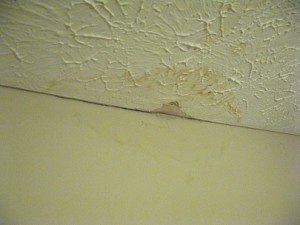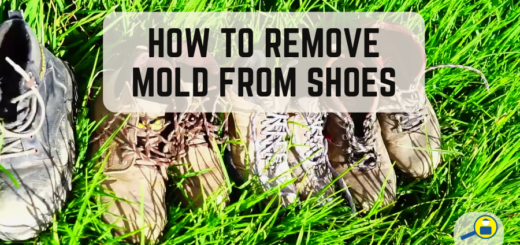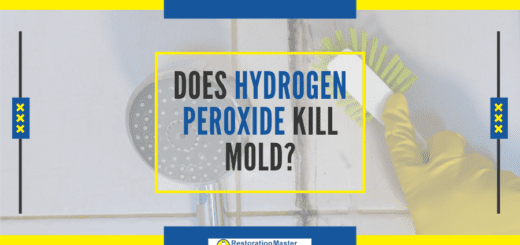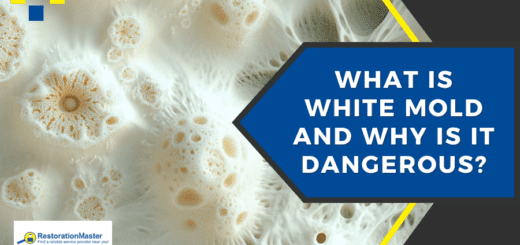Hidden Mold: What to Do If Mold is Hiding in Your Home

Water damage like this could be a sign of hidden moldMold is a type of fungus that grows in damp or humid conditi... More.
Everyone hates to find moldMold is a type of fungus that grows in damp or humid conditi... More in their home or building because of the wide-ranging effects it can have on your health and your property. MoldMold is a type of fungus that grows in damp or humid conditi... More literally feeds on the surfaces it affects, using organic substances found in wood, drywall, and other building materials as a food source. If mold growth is not removed, it will cause extensive damage to the affected surfaces which could affect the structural integrity of your home. This is what makes hidden moldMold is a type of fungus that grows in damp or humid conditi... More growth so dangerous. MoldMold is a type of fungus that grows in damp or humid conditi... More can develop anywhere it has a moisture source and a food source and it often forms in hidden places behind walls and ceilings. It can be difficult to tell if you have hidden moldMold is a type of fungus that grows in damp or humid conditi... More and if no action is taken, it will only get worse. You must be able to identify the signs of hidden moldMold is a type of fungus that grows in damp or humid conditi... More so you can act before it causes even worse damage.
Finding Signs of Hidden Mold
Many homeowners may never suspect moldMold is a type of fungus that grows in damp or humid conditi... More in their homes unless they can see it. However, hidden moldMold is a type of fungus that grows in damp or humid conditi... More can remain undetected for a significant period of time and cause plenty of unseen damage. Make sure you look for these common signs of hidden moldMold is a type of fungus that grows in damp or humid conditi... More growth:
- Odors: MoldMold is a type of fungus that grows in damp or humid conditi... More has a distinct musty smell that is more apparent with significant moldMold is a type of fungus that grows in damp or humid conditi... More growth.
- Water Damage: If your home or building has recently experienced water damage, there is a chance there is moldMold is a type of fungus that grows in damp or humid conditi... More growth as well. MoldMold is a type of fungus that grows in damp or humid conditi... More is a common side effect of water damage because it needs moisture to grow.
- Health Effects: Exposure to moldMold is a type of fungus that grows in damp or humid conditi... More sporesSpores are microscopic reproductive units of fungi or mold t... More can cause a range of allergic reactions including runny or stuffy nose, itchy eyes, skin irritation, or itchy throat as well as respiratory infections. If anyone experiences these symptoms in your home but the symptoms disappear when they leave your home, it could be caused by moldMold is a type of fungus that grows in damp or humid conditi... More.
- Physical Damage: Check for cracks, water marks, bulges, or soft spots in the walls and ceiling. These could be signs of moldMold is a type of fungus that grows in damp or humid conditi... More damage.
When looking for hidden moldMold is a type of fungus that grows in damp or humid conditi... More, check these areas:
- Behind wallpaper, paneling, and drywall
- Opposite side of ceiling tiles
- Underneath carpets and rugs
- Wall surfaces behind furniture
- Areas near pipes
- Air ducts
Mold Testing and Detection
If there is good reason to suspect hidden moldMold is a type of fungus that grows in damp or humid conditi... More growth in your home, you must call a moldMold is a type of fungus that grows in damp or humid conditi... More removal professional to deal with the issue. These professionals use advanced moldMold is a type of fungus that grows in damp or humid conditi... More testing systems to find hidden moldMold is a type of fungus that grows in damp or humid conditi... More growth. The testing equipment is used to measure the amount of moldMold is a type of fungus that grows in damp or humid conditi... More in the air outside the home which serves as a baseline measurement. The mold remediationMold remediation is the process of identifying, removing, an... More professionals will then test each room within the home and compare the measurements to the baseline. Rooms with high moldMold is a type of fungus that grows in damp or humid conditi... More levels are investigated further and treated with mold remediation.
Hidden moldMold is a type of fungus that grows in damp or humid conditi... More could be causing unseen damage in your home and affecting your health. By consistently checking for the common signs of hidden moldMold is a type of fungus that grows in damp or humid conditi... More growth, you can find and remove moldMold is a type of fungus that grows in damp or humid conditi... More before it causes major damage.












